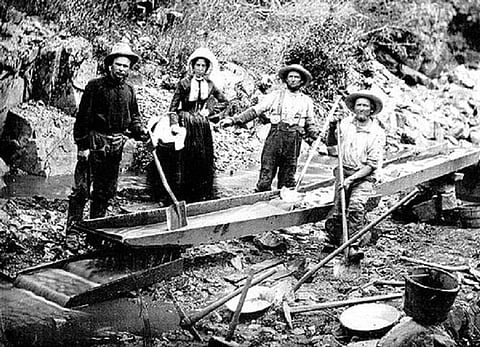
- Home
- NG Hindi
- India
- World
- Politics
- Sex & Relationships
- Entertainment
- Culture
- Lifestyle
- Economy
- Sports
- Sp. Coverage
- Misc.
- NewsGram Exclusive
- Jobs / Internships

California, July 13, 2017:
Role of California Gold Rush in Migration of Chinese
Discovery of Gold in 1848 by James W. Marshall at Sutter's Mill in California sparked almost mass hysteria as it brought thousands of immigrants to the American west. The New York Herald is said to be the first newspaper to confirm about the news of gold rush in California (on August 1, 1948). More than 300,000 people thronged from the United States and abroad seeking to strike it rich. The California Gold Rush also included the Chinese who stayed back even after the gold rush ended in 1855. The Chinese worked as unskilled labor mainly in construction of the railroads.
Contribution of Chinese workers in laying the foundation of Wine Industry
Very few people know that these Chinese workers played a vital role in laying the foundation for the famous California wine industry. People who visit by the Buena Vista Winery in Sonoma County get surprised when they learn about the forgotten past of Chinese laborers. Founded in 1857 it is the first premium winery of California. The people who helped in building it came from far off places while some of them also traveled north of San Francisco to work in the infant vineyards.
"From the late 1850's to the 1870's, they primarily were Chinese laborers. They actually built our building and played a huge role in the founding of Buena Vista," said Tom Blackwood, general manager of Buena Vista Winery.
"They did all of the work of the fields, the plowing. The actual digging, planting and then the management of all the vineyards," said Blackwood. "They definitely worked at the other properties, but Buena Vista was known to have the largest Chinese labor camp north of San Francisco."
The Chinese laborers also dug the cave at Buena Vista Winery for the purpose of storing wines so they could age. But what still remains there, are the pick marks on the walls of the cave. The rocks which were dug from the cave were used as building blocks for the wine-making facilities at that time, and of those original buildings, two of them still remain to this date.
"A couple of my friends showed me, the so-called 'Chinese rock fence,'" said Chinese American Jack Ding, pointing to a low fence made of rocks at the side of a busy road. "Local people, they still remember Chinese laborers did something for them." "They worked here, lived here and most of them died here. They didn't have a place to be buried," said Ding to VOA.
Buena Vista Winery in Sonoma County, California. Wikimedia
Story of Chinese Laborers still a mystery
Stories of the Chinese laborers passed down by word of mouth among the locals. Historians knew about them, but what happened to them isn't certain. Immigrants from China experienced violent anti-Chinese sentiment, boycotts, and in 1882, the Chinese Exclusion Act, restricted their immigration into the United States.
"We don't understand where they went after they left the city of Sonoma. We don't know a whole lot of names," said former Sonoma city historian George McKale.
"This was sort of the forgotten history of Sonoma. We had sort of a shameful history regarding the Ancient Exclusion Act and people want to make things right," said resident David Katz.
Wine Country Chinese Legacy Project, an effort to honor their contributions
To honor these nameless laborers, the Sonoma-Penglai Sister City Committee is raising money to build a Chinese pavilion, in the city of Sonoma. Katz and Ding who are the members of this Committee said that it would also be a piece of history for the new Chinese who are here. While the project aims to raise a total of $75,000, the Chinese sister city of Penglai has pledged $25,000 for building the outdoor structure, thus it will be called the Penglai Pavilion.
"We can see a lot of investors from China. They purchase wineries. They purchase properties. That is the reason why we want to build this kind of physical structure, to remind the people, remind them of the history, who we are and where we came from."
The pavilion would help in educating the new generations of Chinese who visit the wine country learn about the history of their fellow citizens, said Ding.
– by Sabnam Mangla of NewsGram, Twitter: @sabnam_mangla
